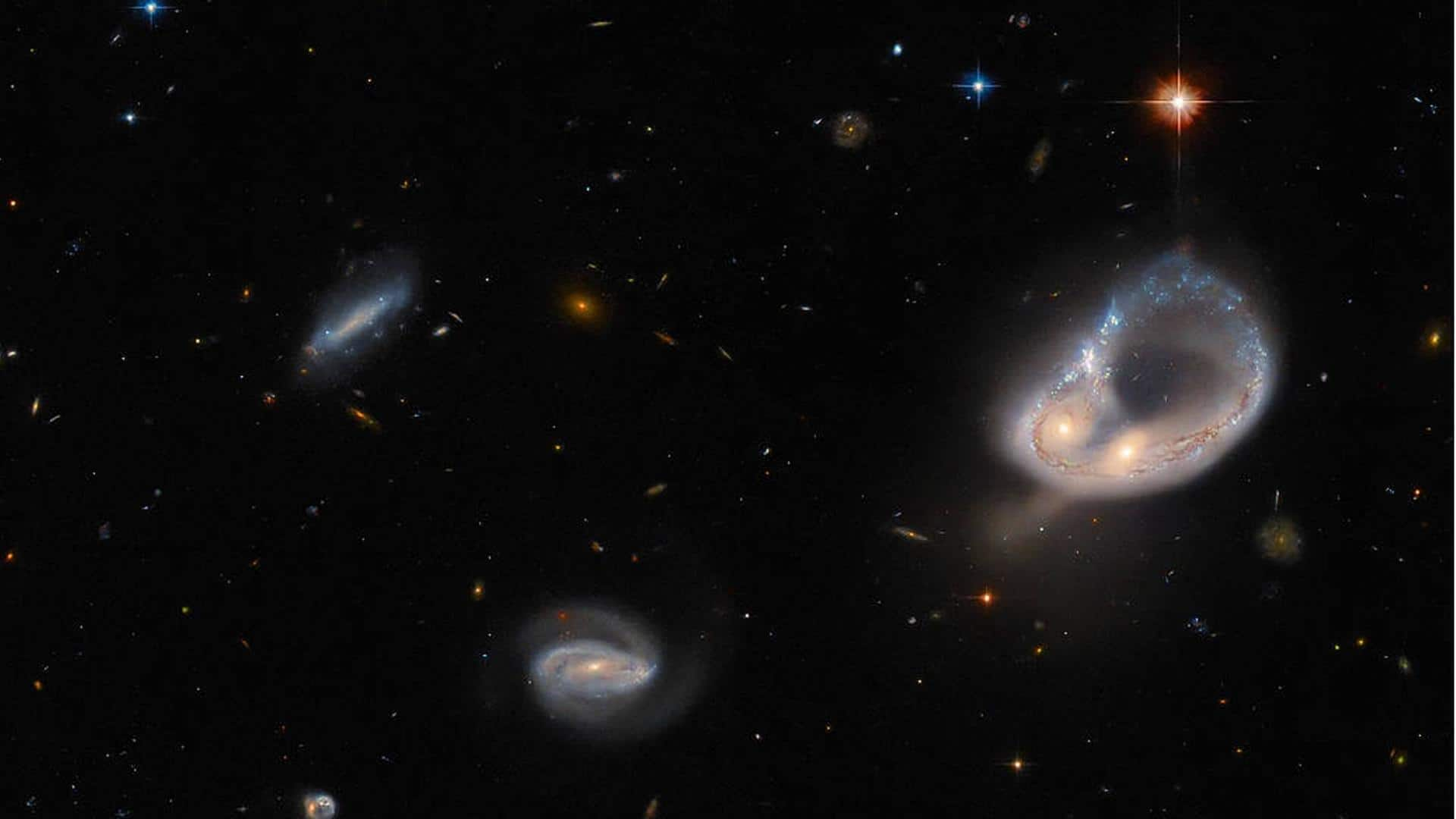
Hubble telescope snaps a "colossal ring" formed by interacting galaxies
What's the story
A new image captured by the Hubble Space Telescope has revealed an unusual pair of merging galaxies called Arp-Madore 417-391, which lies 670 million light-years away. The two interacting galaxies, distorted by gravity, coiled together to form a "colossal ring," with their galactic cores lying side by side. This galactic merger resides in the Eridanus constellation in the southern celestial hemisphere.
Context
Why does this story matter?
The Hubble Space Telescope was built in a collaboration between NASA and the European Space Agency (ESA). It orbits the Earth at an altitude of 535 km and takes only 95 minutes to complete one orbit. In September, the Hubble captured an image of what looked like two overlapping spiral galaxies, but in reality, it was an optical illusion.
Process
ACS was used to capture the image
The image was captured by the Advanced Camera for Surveys (ACS) on Hubble, an instrument designed to look for "galaxies and galaxy clusters in the ancient universe." The ACS has been operational for two decades. Over its lifetime, it has been involved in everything from "mapping the distribution of dark matter to studying the evolution of galaxy clusters," as per NASA.
Information
What is the Arp-Madore catalog?
The Arp-Madore catalog is an astronomical collection of 6,000 peculiar galaxies spread throughout our southern sky. According to NASA, it comprises a collection of "subtly interacting galaxies as well as more spectacular colliding galaxies." The newly discovered galactic merger is a part of it.
Future
Hubble images will be used for follow-up investigations
This picture might be used for follow-up observations in the future by James Webb Space Telescope (JWST) and other ground-based space telescopes. One of the most iconic Hubble images is that of the Pillars of Creation, located in the Eagle Nebula. Recently, the JWST probed the same region and captured a spectacular portrait, revealing more details, including hidden stars.